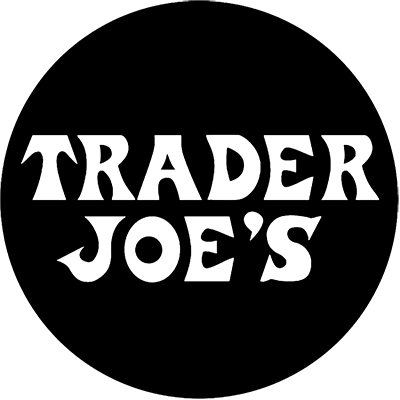Tags
#Growth
Don't be pressured to make decisions that will hurt your culture
In the early 2000s, the Samwer brothers were cloning US tech start-ups and then selling the clone to the original company for a considerable premium. By 2011, they created Wimdu, an Airbnb clone that grew to have more than 10,000 properties available in the first 100 days. They did this by rapidly growing and hiring 400 employees practically overnight.
This rapid growth concerned Airbnb co-founder Brian Chesky because, as he explains, "Most companies, if they lose Europe, they're just a smaller company. For Airbnb, if we lose Europe, there is no Airbnb. A travel website where you can't travel to Europe is like a phone without a signal."
However, when the Samwer brothers looked to sell Wimdu to Airbnb, Brian refused. He did not want to absorb 400 employees, who he felt were more like mercenaries for a company that cared more about short-term profits than believing in a long-term purpose.
Ultimately, Airbnb beat Wimdu in growth because, as Brian explains, "We had a better community, and [Wimdu] couldn't understand community. We ended up flying to Europe. We hired a bunch of country managers. We flew them all to San Francisco and trained them for a month or two. We said, 'Now go to your countries. Hire your team. Here's how you open a market. Here's how you open cities. And we opened eight or ten offices in three months."
Expand into completely new industries that align with your purpose
Although they are best known for their clothing line, Patagonia has never limited themselves to only one industry. Instead, they expand their business based on the positive impact it could make on the environment.
- First, they began as a blacksmithing company making reusable climbing tools that protected the environment.
- Next, they entered the clothing industry with a focus on creating durable clothing that would stay out of landfills.
- Then, they started a book and film division focused on educating people about environmental issues.
- Now, Patagonia's future lies in regenerative and restorative agriculture with Patagonia Provisions.
With each expansion, Patagonia is always asked "What do a bunch of climbers know about this?" or "What does a clothing company know about that?" And their answer is always "nothing," but if it helps save the planet, they will commit to it 100%.
Grow strong, not fat
In the late 80s, Patagonia was growing fast—50% a year fast. They started opening more locations and increasing their inventory production. But after the 1991 recession, dealers started cancelling orders and inventory began to build. Patagonia now had too many people with too little work being overseen by too many layers of management. With an inflated product line, they also had neglected to take into account the cost of having to design, produce, warehouse, and catalog all these products.
After almost losing the business because of this, Founder Yvon Chouinard decided to change their growth mindset from growing fat to growing strong. Patagonia began looking at their business as if they were going to be around for the next 100 years having to take responsibility for the decisions they made today.
As a result, Patagonia stopped looking at quarterly earnings and setting yearly growth projections. "One year we will grow 3% another year we will grow 20%," Yvon explains—and he is okay with that. Patagonia now chooses to wait for the customer to tell them how much product to make. Slow or no growth just means that profits have to come from "being more efficient with operations and living within [brand's] means."
Patagonia also now knows exactly how many people they need to hire if they want to add just one product to their line.
Don't be distracted by the next shiny object
When co-founder Herb Kelleher was approached by a European billionaire to establish a Southwest low-fare carrier in Europe, his reply was a simple 'No.' While this partnership would have grown Southwest's market share, expanding out into a different continent would have meant navigating different cultures, currencies, and regulators. It would have also meant needing to use different types of airplanes. To Herb, this would have been too much of a distraction away from Southwest's core strategy.
For this same reason, Southwest also sold off Muse Air, an airline they had acquired that offered longer-haul service and more amenities. It didn't fit with their core strategy and as a result, became a liability.
Growth is not a strategy, it's a tactic
In 2002, Starbucks' primary goal became to show Wall Street continued growth and increased comparative sales at all costs. As their store count tripled over the next five years, the Starbucks Experience weakened.
The warm environment became a sterile cookie-cutter template that could be easily replicated for new stores; the showmanship of coffee was replaced with button pushing; DVDs, CDs, and stuffed animals were front and center to increase daily store sales; and managers and staff were now trained by just being handed a "thick, three-ring binder of rules, techniques, and coffee information and was simply told to 'read it.'"
Slowly the amount of money each customer was spending in stores began to dip. By 2007, traffic slowed to the lowest levels in history and Starbucks was forced to close 8% of their US stores and let go over 12,000 people globally to stay in business.
Howard Schultz returned as CEO in 2008 and brought with him his own Transformation Agenda that he shared openly with the entire company in a ten part series. He wanted to refocus the company on one customer, one partner, and one cup of coffee at a time. To help free everyone to enthusiastically refocus on what was best for the customer, and not Wall Street, Starbucks would:
- Slow down the expansion of US locations, while closing underperforming stores that were opened haphazardly in the first place.
- No longer report same-store sales.
- Introduce the Pike Place Roast coffee blend to honor their history.
- Revamp their rewards program to build a stronger emotional connection with customers.
- Remove the sale of movie posters, CDs, DVDs, and stuffed animals in order to refocus on coffee.
- Close all stores for half a day in order to retrain baristas on the art of making an espresso.
- Redesign each store to be unique while being warm and inviting.
It took time but by June 2009, customer satisfaction began to rise again and Starbucks stock was on an upward trend rising 41%.
Let loyalists lead the way for expansion
Starting in the 1970s, Starbucks had begun building a customer-base through mail order. These coffee enthusiasts had discovered Starbucks either from vacationing in Seattle or having recently moved from the Seattle area. In their hometowns they began spreading awareness of Starbucks through their network of friends, who then began ordering from Starbucks as well. As Starbucks began to focus on nationwide expansion, Howard leveraged the data he had on this customer-base to decide where to open stores.
Product knowledge
Trader Joe's considers themselves an informative retailer. Unlike any supermarket, they pride themselves on being able to tell customers who developed each product, what's in it, how it tastes, if it needs preparing, and why it's a good value.
But to foster this culture of knowledge each store has a special expense account for employees to sample each product and test out recipes. Managers are are even sent on global tours of wine and cheese regions to better understand each product's origin.
Promote from within
In order to keep a strong culture, Trader Joe's is very strict about promoting from within. Over 75% of Trader Joe's supervisors started as crew members and 100% of store managers and regional vice presidents are promoted from lower positions in the company. Many of the office employees also began their career in a Trader Joe's store.
CEO Dan Bane even limits store growth based on the amount of talent they are able to select from within the company. "We won't open a store just because we can, we want to open a store that's run by the right kind of people doing the right kind of things." To train rising talent, Trader Joe's University, a two-day developmental course, was created to offer management, leadership, and communication skills to staff.
Only open super-volume stores
When looking to open a new Trader Joe's, founder Joe Coulombe's strategy was to "have a few stores, as far apart as possible, and to make them as high volume as possible." To do this, Joe would:
- Keep to the same demographics. Trader Joe's would seek out areas that attracted the underpaid and overeducated. This included locations near major institutions of learning, hospitals, and high tech corporate offices. It also included "semi-decayed neighborhoods, where...the mortgages were all paid-down,...the kids had left home..." and housing and rental prices were cheaper and more suitable for those "underpaid academics." Each area had to have a high number of households, no less than 40,000, with at least 66% being in their target audience.
- Look for locations with excellent boulevard access. Trader Joe's would avoid easy freeway access as those locations are more prone to holdups.
- Avoid cannibalization of other stores. Instead of measuring the distance between stores using miles, Trader Joe's kept a rule that stores should be no less than twenty minutes apart.
- Avoid areas where people are "strapped" with high mortgages. Sure these families may have high incomes but Trader Joe's considers them "the poorest of the poor" because they are burdened with mortgages and saving for their children's colleges. In Joe's opinion, these people are better off shopping at Costco.
- Avoid areas that do not represent the core customer's values. When driving around the area of a potential store, if Joe Coulombe saw too many campers and speedboats he would cross the option from the list. As he puts it: "People who consume high levels of fossil fuel don't fit the Trader Joe's profile."
As a result, Trader Joe's achieves sales of $1,000/sq foot of total area, while supermarkets $570/sq foot of sales area.
Don't hunker down in times of uncertainty
During the Great Recession, Umpqua Bank had no layoffs and didn't reduce costs. While this was the strategy of many companies, former CEO Ray Davis instead invested in Umpqua's capacity. He explains, "How can we weather the storm by reducing our resources? When you are in stormy seas, you call out, 'All hands on deck,' you don't tell half of them to jump overboard...The last thing we wanted to do was weaken our ability to create our own future."
Even though their earnings took a hit, Umpqua emerged from the Great Recession quickly and with a stronger balance sheet than ever before. Ray attributes this to Umpqua's ability not to hunker down but instead invest in opportunities like:
- Creating an international banking division
- Adding a wealth management division
- Expanding commercial banking operations in Seattle
- Adding a capital markets division
But this doesn't mean Umpqua condones retaining excess overhead. Ray clarifies, "I am as much for efficiency as anyone, but why wait for problems to run your company as efficiently as possible?"





